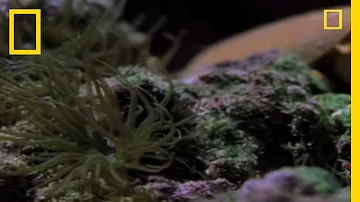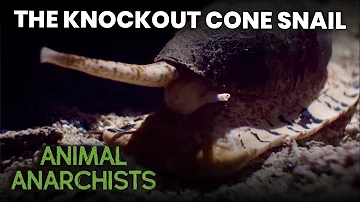
Cone Snail
Conus

Meet the Cone Snail
The cone snail is a group of predatory marine gastropod mollusks known for their beautifully patterned, cone-shaped shells. Found primarily in tropical and subtropical ocean waters, these snails use a specialized, harpoon-like tooth to inject potent venom into their prey, which includes fish, worms, and other mollusks. Some cone snail species possess venom powerful enough to be dangerous, and even fatal, to humans. Despite their slow movement, cone snails are highly effective hunters thanks to their unique method of venom delivery.
Classification
Invertebrate
Habitat
Coral reefs and sandy ocean floors in tropical and subtropical seas
Diet
Carnivore
Lifespan
10-20 years
Conservation
Least Concern
Weight
15-100 grams
📖Fascinating Facts
Venomous Hunter
Cone snails hunt by firing a venomous, harpoon-like radular tooth into their prey, paralyzing it almost instantly.
Stunning Shells
Their shells come in a wide variety of intricate patterns and colors, making them highly sought after by shell collectors worldwide.
Medicinal Potential
Some compounds found in cone snail venom are being developed into powerful, non-addictive painkillers and treatments for neurological diseases.
📋Detailed Description
Cone snails (genus Conus) are a diverse group of marine gastropods, comprising over 800 recognized species, each characterized by a distinctively patterned, conical shell that can range from 1.5 cm to over 15 cm in length. Their anatomy is highly specialized for predation: they possess a long, extensible proboscis and a radular tooth modified into a hollow, barbed harpoon capable of delivering complex venom. Cone snails are primarily nocturnal and solitary, spending daylight hours buried in sand or hiding among coral rubble. Their venom is a sophisticated cocktail of hundreds of bioactive peptides, known as conotoxins, which target specific ion channels and receptors in prey, resulting in rapid paralysis. These snails exhibit remarkable diversity in prey selection, with some species specializing in hunting fish, others targeting marine worms (polychaetes), and some preying on other mollusks. Reproduction is sexual, with internal fertilization; females lay egg capsules from which free-swimming larvae (veligers) emerge in most species, although some produce direct-developing juveniles. Unlike many gastropods, cone snails lack a distinct head and have reduced eyes, relying instead on chemoreception to locate prey. Their shells, often prized by collectors, display intricate color patterns that may serve as camouflage or warning signals. Despite their slow movement, cone snails are efficient ambush predators, using their venom to subdue prey much larger or faster than themselves.
💡 Did you know?
A single sting from some cone snail species can be fatal to humans, and there is currently no antivenom.
🔬Research & Sources
🎭Behavior & Social Structure
Cone snails are predominantly solitary and exhibit ambush predation, lying in wait partially buried in sand or hidden within reef crevices. When prey is detected via chemoreceptors, the snail extends its proboscis and rapidly fires its harpoon-like radular tooth, injecting venom in a fraction of a second. Fish-hunting species, such as Conus geographus, have evolved a sophisticated 'net hunting' behavior, using their proboscis to envelop small fish before envenomation. After immobilizing prey, the snail retracts the proboscis to ingest the meal whole. Cone snails are generally nocturnal, emerging at dusk to hunt, and show little evidence of social interaction outside of mating. They are slow-moving, relying on stealth and chemical cues rather than speed. Some species exhibit territoriality, defending prime hunting grounds from conspecifics.
👶Reproduction & Life Cycle
Cone snails are dioecious, with separate male and female individuals. Mating involves internal fertilization, where the male uses a specialized organ to transfer sperm to the female. Females lay egg capsules, each containing dozens to hundreds of eggs, which are attached to hard substrates such as rocks or coral. Depending on the species, development may be planktonic (with free-swimming veliger larvae that drift in the water column for days to weeks) or direct (with juveniles hatching as miniature adults). There is no parental care after egg deposition. Breeding seasons vary by region and species, but many tropical species breed year-round, while others show peaks correlated with water temperature or food availability.
🛡️Adaptations & Survival
Cone snails possess several remarkable adaptations: their venom apparatus, consisting of a venom gland, radular sac, and harpoon-like tooth, is one of the most sophisticated in the animal kingdom. The venom composition is highly variable, even between individuals, allowing rapid evolutionary adaptation to different prey and predators. Their cryptic coloration and shell patterns provide camouflage against predators and prey. The ability to regenerate lost radular teeth ensures a constant supply of venomous harpoons. Some species can modulate venom composition depending on whether they are hunting or defending themselves. Their chemosensory organs allow them to detect prey buried in sand or hidden in crevices.
📚Research Sources
🎨Cultural Significance
Cone snail shells have been collected and traded for centuries, prized for their beauty and rarity. In some Pacific Island cultures, cone shells were used as currency or in ceremonial contexts. The potent venom of cone snails has inspired both fear and fascination; in modern times, conotoxins have become valuable in biomedical research, leading to the development of novel painkillers such as ziconotide (derived from Conus magus venom). Cone snails also feature in local folklore, often as symbols of danger or mystery.
🔬Recent Research & Discoveries
Recent research has focused on the molecular diversity of conotoxins, revealing that each species produces a unique suite of peptides with potential pharmaceutical applications, including analgesics, anticonvulsants, and treatments for neurological disorders. Genomic studies have illuminated the rapid evolution of venom genes, driven by arms races with prey and predators. Ongoing research is exploring the ecological roles of cone snails in reef ecosystems and their responses to environmental change. Advances in taxonomy, aided by molecular phylogenetics, have led to the reclassification of many species and the discovery of cryptic diversity within the genus.
🎥Wildlife Videos

The Deadly Cone Snail | World's Weirdest
#NatGeoWILD #ConeSnail #WorldsWeirdest About World's Weirdest: This amazing series showcases the strangest, freakiest, ...
Nat Geo Animals

Killer Cone Snails | National Geographic
#NationalGeographic #ConeSnails #Venomous About National Geographic: National Geographic is the world's premium ...
National Geographic

You Won’t Believe What the Most Venomous Animal in the World Is
You're thinking a deadly viper or threatening scorpion, right? No, the most venomous animal in the world is the cone snail. So how ...
Crazy Creatures

Killer Cone Snail | World's Weirdest
#NatGeoWILD #WorldsWeirdest #ConeSnail About World's Weirdest: A buffalo with three eyes, an exterminator who eats his ...
Nat Geo Animals

The Deadly Elegance of Cone Snails: Nature's Underwater Assassins
ConeSnails #VenomousCreatures #MarineBiology #NatureDocumentary #OceanMysteries Dive deep into the enigmatic world of ...
The Sonic Canvas

The Knockout Cone Snail | Animal Anarchists (S1E13) | FULL EPISODE | Da Vinci
Hungry cone snails use their siphons to sniff out fish and worms to eat. When they find their prey, they release a cocktail of drugs ...
Da Vinci Kids
🌍Habitat Information
The Cone Snail typically inhabits Coral reefs and sandy ocean floors in tropical and subtropical seas environments. Cone Snails have adapted to their environments with specialized features and behaviors.
Primary Habitat:
Coral reefs and sandy ocean floors in tropical and subtropical seas
More detailed habitat information will be available soon.
🛡️Conservation Status
The Cone Snail is currently classified as Least Concern. Conservation efforts are crucial for preserving this species for future generations.
Common Threats:
- 🏠Habitat loss and fragmentation
- 🌡️Climate change impacts
- 🎯Hunting and poaching
- 🏭Human-wildlife conflict
⚠️Threats & Conservation Challenges
While most cone snail species are currently listed as Least Concern, they face localized threats from habitat destruction (especially coral reef degradation), pollution, and over-collection for the shell trade. Some species with restricted ranges, such as Conus gloriamaris, are considered vulnerable due to habitat loss and collection pressure. Climate change and ocean acidification may also threaten their habitats and prey availability. Accidental envenomation of humans, while rare, can be fatal, particularly from larger fish-hunting species, leading to negative perceptions and occasional culling. Population trends are poorly documented for many species due to their cryptic habits and taxonomic complexity.
🔬Scientific Classification
Scientific Name
Conus
Classification Hierarchy
🔍 About Taxonomic Classification
Taxonomic classification is a hierarchical system used by scientists to classify and organize living organisms based on shared characteristics and evolutionary relationships.
The system moves from broad categories (Kingdom) to increasingly specific ones, with each animal's scientific name typically consisting of its Genus and species.
📝Community Notes
Share your observations and insights about the Cone Snail with our community of wildlife enthusiasts.
Join Our Community
Sign in to share your observations and connect with fellow wildlife enthusiasts.
Sign In to ContributeNo community notes yet
Be the first to share your observations about the Cone Snail!
Explore Cone Snail
Select a tab above to learn more about this amazing animal.
📸Photo Gallery
No photos available for this animal yet.
🌟Discover More Wildlife
Continue your journey of discovery with more fascinating animals from our database
